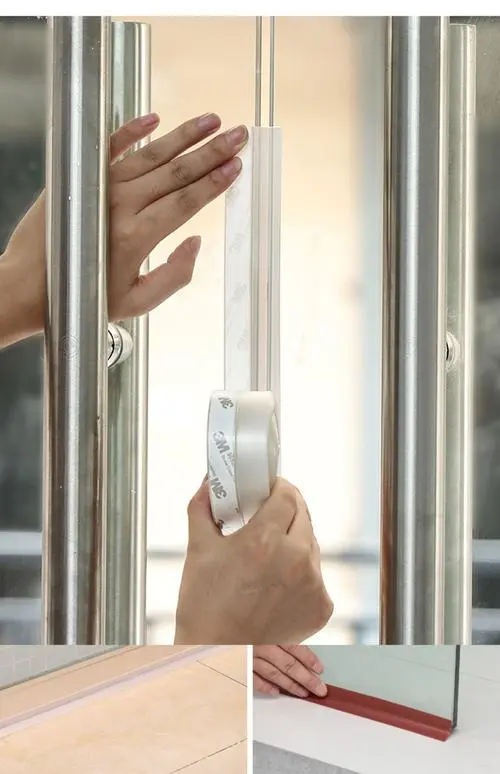rubber sealing strip
The Importance of Rubber Sealing Strips in Modern Applications
Rubber sealing strips are integral components in a wide array of industries, providing essential functions that enhance performance, durability, and safety. These versatile strips, made from synthetic or natural rubber, serve primarily to seal gaps and openings, preventing the ingress of dust, water, air, and other contaminants. Their applications span across various domains, including automotive, construction, household appliances, and industrial machinery.
1. Understanding Rubber Sealing Strips
At their core, rubber sealing strips are designed to create a tight barrier between surfaces. They can be found in numerous forms, such as extruded profiles, molded shapes, and adhesive-backed strips. The choice of rubber type and formulation can vary based on specific requirements, such as temperature resistance, flexibility, and durability. Common types of rubber used include EPDM (Ethylene Propylene Diene Monomer), NBR (Nitrile Butadiene Rubber), and silicone, each catering to different environmental challenges.
2. Applications in the Automotive Industry
In the automotive sector, rubber sealing strips are crucial for ensuring a vehicle's integrity and comfort. They are commonly used around doors, windows, trunks, and hoods to provide a tight seal against weather elements. This not only enhances the vehicle's aesthetic appeal but also contributes to noise reduction and vibration damping. Furthermore, a good seal prevents water from entering critical components, thereby safeguarding electronic systems and interiors from damage.
The automotive industry has seen extensive advancements in sealing technology, where modern cars are equipped with sophisticated sealing solutions that enhance energy efficiency and aerodynamics. As electric and hybrid vehicles become more prevalent, the demand for high-performance sealing solutions is expected to grow, making rubber sealing strips vital for ensuring these vehicles operate effectively in various conditions.
3. Sealing in Construction
In construction, rubber sealing strips play a pivotal role in enhancing the longevity of structures. They are utilized in windows and doors to minimize air leakage and thermal bridging, which can lead to energy losses. Properly installed sealing strips can significantly improve a building's energy efficiency, leading to reduced heating and cooling costs. Additionally, these strips are vital in preventing moisture ingress which can lead to mold growth and structural damage over time.
rubber sealing strip

In large-scale constructions, sealing strips are often used to provide flexibility in joints, particularly in structures prone to movement or settlement. By allowing for slight expansions and contractions, these sealing solutions help maintain the structural integrity of buildings under varying environmental conditions.
4. Household Applications
Rubber sealing strips are also prevalent in everyday household applications. They can be found in appliances like refrigerators, washing machines, and ovens, where they serve to insulate and seal, improving energy efficiency and performance. For instance, the door seals on refrigeration units prevent cold air from escaping, ensuring that these appliances operate efficiently. In addition, sealing strips in bathroom fixtures help prevent water leaks, promoting a safer and cleaner living environment.
5. Industrial Uses and Future Trends
In industrial settings, rubber sealing strips are utilized in various machinery to prevent leaks of fluids and gases. They are critical in machinery that operates under high pressure or temperature, ensuring that performance remains consistent and safe. As industries continue to evolve, the need for more specialized and durable sealing solutions is increasing. Innovations in material science are paving the way for rubber sealing strips that can withstand extreme conditions, such as high temperatures, ozone exposure, and aggressive chemicals.
Looking to the future, the development of environmentally friendly and sustainable rubber materials is gaining traction. Companies are seeking to reduce their environmental footprint without compromising quality. This shift in focus towards sustainable materials will play a crucial role in the rubber sealing strip market, influencing both production methods and end-user preferences.
Conclusion
Rubber sealing strips are more than just simple components; they are essential fittings that ensure the functionality and longevity of products across various industries. From automotive to construction, their role in sealing, insulating, and protecting is indispensable. As technology advances and sustainability becomes a priority, we can expect to see continued innovations in rubber sealing strip applications, further solidifying their importance in modern engineering and design.
Share
-
The Best Lubricants for Aluminum Roller GuidesNewsJul.23,2025
-
Slitting Machine Applications in the Packaging IndustryNewsJul.23,2025
-
Rolling Roller Balancing Techniques for Smooth OperationNewsJul.23,2025
-
How To Optimize An EV Battery Assembly LineNewsJul.23,2025
-
Energy Efficiency in Modern Battery Formation EquipmentNewsJul.23,2025
-
Automation Trends in Pouch Cell Assembly EquipmentNewsJul.23,2025







